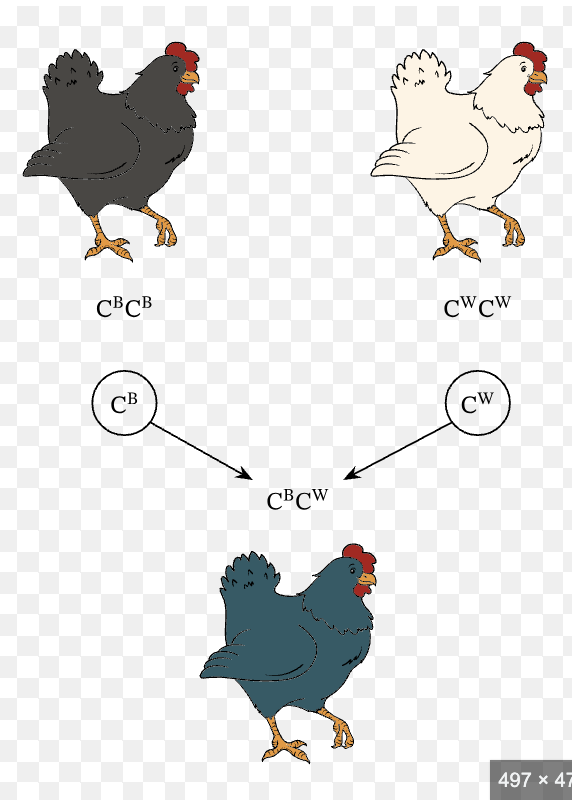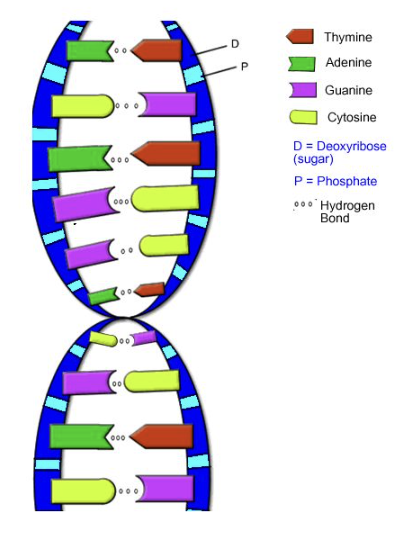
Looks like no one added any tags here yet for you.
Alleles
Different forms of genes for a single trait
Dominant Allele
One whose trait always shows up in the organism when the allele is present; always expressed
Recessive allele
One whose trait is hidden whenever the other allele is present; only expressed in the homozygous state
Heterozygous
Genotypes made of two different alleles
Homozygous
Genotypes made of the same alleles
Heredity
The passing of physical characteristics from parent to offspring
Genetics
The scientific study of heredity
Trait
Each specific characteristic, such as stem hight or seed
Gene
Used to describe the factors that control a trait, section of DNA molecule that contains information to code for one specific protein
Purebred
An offspring of many generations that have the same form of a trait
Hybrid
An organism that has two different alleles for a trait
Fertilization
The process in which a new organism begins to form when egg and sperm cells join together.
Genotype
An organism’s genetic makeup, or alleles: Ex: R,R R,r
Phenotype
An organism’s physical appearance, or visible trait; how a trait looks or is expressed
Punnett Square
a chart that shows all of the possible ways that alleles can combine in a genetic cross
Probablility
A number that describes how likely an event is to happen
Incomplete dominance
Occurs when both alleles are partially dominant
Example of incomplete

Codominance
Occurs when both alleles for a gene are expressed equally
Example of codominance

Multiple alleles
Three or more possible alleles that determine the trait
Example of multiple alleles
Eye Color
Polygenic inheritance
Occurs when one or more gene affects a trait
Example of polygenic inheritance
Height
Meiosis
The process by which the process of chromosomes is reduced by half as sex cells form; the chromosome pairs separate into two different cells; the sex cells that form later have only half as many chromosomes as the other cells in the organism
Nitrogen bases
Adenine, Thymine, Cytosine, Guanine
How nitrogen bases mix
(AT) (TA) (CG) (GC)
What does DNA stand for
Deoxyribonucleic acid
DNA replication
The process in which an identical copy of a DNA strand is formed for a new cell; because of the way nitrogen bases pair up, the order of the bases in each new DNA strand exactly matches up the order in the original DNA strand
Order of Structures (smallest to biggest)
Nitrogen bases, DNA, chromosome, cell
Good path of cell division
Makes an identical copy
Bad path of cell division
Has mutations (can lead to cancer)
Mutation
A change in the DNA of a gene or chromosome, can cause a cell to produce an incorrect protein during protein synthesis which may cause an organisms trait to be different from what it normally would
What did Mendel observe?
The offspring in the F1 generation always had the dominant alleles trait, while the offspring of the F2 generation often had ¼ of the recessive trait
Significance of Mendel’s observations
Showed that the offspring traits are determined by individual, separate alleles inherited by each parent
What is a chromosome made of

Substitution
Wrong base is matched
Insertion
A base is added in
Deletion
A base is removed
How is cancer caused
Many mutations in a cell